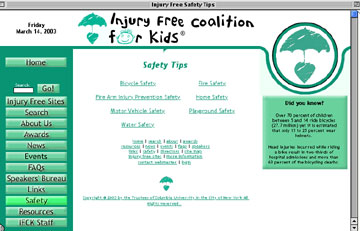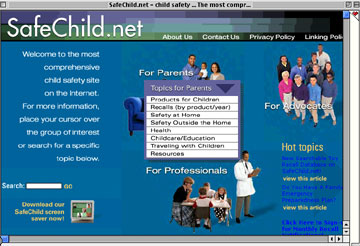|
|
A
Brief Introduction:
I teach in the computer lab in a public
elementary school in New York City. Early in this
school year, I met with a fifth grade teacher to
discuss ways we could begin to integrate
technology into her curriculum and create a unit
which had relevance to the students' lives. We
wanted to create a unit that incorporated
writing, math and technology skills. We decided
upon a science unit on force and motion as our
starting point. Our original idea was to use
force and motion as a way to help students
understand velocity and thus understand how to
cross streets safely. We were excited by the
possibilities of integrating math, science,
writing and technology skills for the students.
During the planning stage, we came across an
article that had appeared in The New York
Times, "Safety: Another
Problem with Poverty." As often happens when
one starts to do research on the Internet, one
thing led to another. We realized that our unit
could take on tremendous relevance for our
students if we were willing to alter its
direction. We did! What follows is a unit that
none of us could have imagined when we began. It
reminds us that when subjects of relevance are
taught, anything can happen. |
The Goals
For the Teacher:
1.Teach science in
a socially relevant context.
2. Use scientific inquiry to raise the level of
students’ awareness.
3. Use technology skills in the classroom
including word processing, graphics and spread
sheets.
4. Integrate critical thinking, math and writing.
5. Model ways we can use the world as our
laboratory.
For the Students:
1. A rare opportunity to apply knowledge to a
real situation.
2. A chance to empower students to make a
difference.
3. Use information in a "real" way!
4. Integrate science, math, writing and critical
thinking.
5. To save lives!! Help students internalize and
integrate concepts and apply to their everyday
experiences.
6. Appreciate the roles that many community
people play in making the neighborhood safe.
|
The world is an exciting and
challenging place for children.
Teaching critical thinking
and the scientific method present a unique
opportunity to address safety through the
discipline of science. In science, students are
taught the process of inquiry. We used the
Internet to access amazing resources and to have
direct contact with experts. This
site provided my class
with a great place to begin our search for
information about making our school community
safer for children. We were all amazed by the
amount of information available.

|
 This site, http://safechild.net/for_parents/pedestrian.html
, provided us with
information which validated concerns about safety
in our own community. I suggest that you bookmark
this site and refer your students to it when you
begin your research. This site has good
introductory information about Pedestrian Safety
and Walking To School . This site, http://safechild.net/for_parents/pedestrian.html
, provided us with
information which validated concerns about safety
in our own community. I suggest that you bookmark
this site and refer your students to it when you
begin your research. This site has good
introductory information about Pedestrian Safety
and Walking To School .
|
|

 Next page
Next page
 Next page
Next page